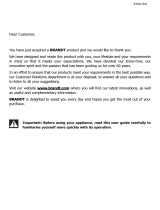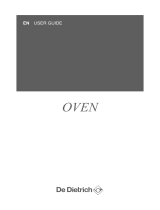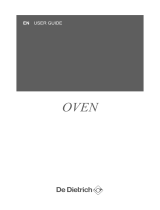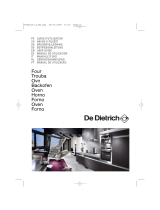
Four
Backofen
Oven
Horno
Oven
Forno
FR INSTRUCTION UTILISATEUR
DE BEDIENUNGSANWEISUNG
EN INSTRUCTION USER
ES MANUAL DE INSTRUCCIONES
NL INSTRUCTIES VOOR DE GEBRUIKER
PT INSTRUÇÕES UTILIZADOR

0

560
> 550
600
50
50
20
20
>
550
585
70
560
595
+4
- 0
<
>
2.2.3
2.1
1.2.1
1.2.2
1.2.3
2.2.4
2.3.1
2.3
1.2
2.2
2.2.2
1
2
2.3.2
1.1
1.1.1
2.2.1
2.1.1
Nr
SERVICE: TYPE:
CC
XXXXXXXXX
XXXXXXXXX
XXXXX XXX
XXXX
XXXXX
XXXXXXXXX
XXXXXXXXX
XX XX XXXX
XXXXX

2.4.1
2.4
2.6.1
2.6.2
2.6
2.4.2
2.6.3
2.7.1
2.7
2.5.2
2.5
2.5.1
2.8.1
2.7.2
2.7.3
2.8

2.8.2
2.9.1
2.9
3.2
3
2.9.2
3.2.1
3.2.2

3.3.1
3.3
3.3.3 3.3.4 3.3.5
P Y R O L Y S E
L
R
3.3.9
3.3.10
3.3.11
3.3.6 3.3.7 3.3.8
A
A
3.3.2
P
Y
R
O L
Y
S
E
P
Y
R
O
L
Y
S
E
3.5.1
3.5

e n g l i s h
Important:
When you receive the appliance,
unpack it immediately. Give it an
overall inspection. Make note of any
concerns or reservations on the
delivery slip and make sure to keep a
copy of this form. Before starting your
appliance, please read this
installation guide carefully to
familiarise yourself quickly with its
operation. Keep this user guide with
your appliance. If the appliance is
ever sold or transferred to another
person, ensure that the new owner
receives this user guide.
Please become familiar with these
recommendations before installing
and using your oven. They were
written for your safety and the safety
of others.
— Before using your oven for the first
time, heat it while empty for
approximately 15 minutes. Make
sure that the room is sufficiently
ventilated.
— This oven was designed for use by
private persons in their homes. This
oven does not contain any asbestos-
based components.
— Your appliance is intended for
standard household use. Do not use it
for commercial or industrial purposes
or for any other purpose than that for
which it was designed.
— Do not modify or attempt to
modify any of the characteristics of
this appliance. This would be
dangerous to your safety.
— Never place tin foil directly in
contact with the oven floor as the
build up of heat may damage the
enamel.
— Do not place heavy weights on the
open oven door, and make sure that
children are able neither to climb nor
sit on it.
— Do not use your oven as a larder
or to store any items after use.
— After using your oven, make sure
that all the controls are in their stop
position.
— The oven must be turned off when
cleaning inside the oven.
— Before removing the glass
window, allow the appliance to cool
down.
This appliance may be used by
children aged 8 years and older,
and by persons with impaired
physical sensorial or mental
capacities, or without experience or
knowledge, if they are supervised or
have received prior instructions on
IMPORTANT SAFETY INSTRUCTIONS - READ CAREFULLY AND RETAIN
FOR FUTURE USE.
This user guide is available for download on the brand’s website.
Safety instructions

e n g l i s h
how to use the appliance safely and
have understood the risks involved.
Children must not be allowed to play
with the appliance. Cleaning and
maintenance operations must not be
carried out by children without
supervision.
— Children must be supervised to
prevent them from playing with the
appliance.
WARNING: The appliance and its
accessible parts become hot during
use. Be careful not to touch the
heating elements inside the oven.
Children under 8 years old must not
be allowed near it unless they are
supervised at all times.
— This appliance is designed to cook
with the door closed.
— Before pyrolytic cleaning of your
oven, remove all accessories and any
thick deposits.
— During cleaning, the surfaces may
become warmer than under normal
conditions of use. It is advisable to
keep children away from the
appliance.
— Do not use a steam cleaner.
— Before removing the back wall,
the appliance must be powered off.
After cleaning, the back wall must be
put back in place in accordance with
the instructions.
— Do not use abrasive cleaning
products or hard metal scrapers for
cleaning the oven's glass door, as
they could scratch the surface and
cause the glass to shatter.
WARNING: Make sure the
appliance is disconnected from
the power before replacing the lamp
in order to avoid the risk of electric
shock. Change the lamp only when
the appliance has cooled down. To
unscrew the view port and the light,
use a rubber glove, which will make
disassembly easier.
The electrical plug must remain
accessible after installation.
It must be possible to disconnect the
appliance from the power supply,
either using a plug or by fitting a
switch on the fixed wiring system in
accordance with installation rules.
If the power cable is damaged, it
should be replaced by the
manufacturer, its after-sales service
department or by a similarly qualified
person in order to avoid danger.
— This appliance may be installed
either under a worktop or in a cabinet
column, as indicated on the
installation diagram.
— Centre the oven in the unit so as
to ensure a minimum distance of 10
mm between the appliance and the
surrounding unit. The material of the
unit supporting the appliance must be
heat-resistant (or covered with a
heat-resistant material). For greater
stability, attach the oven to the unit
with 2 screws through the holes
provided on the side panels.

e n g l i s h
Unpacking.
Remove all protective packing pieces.
Check and proceed according to the
appliance characteristics shown on the pro-
duct name plate (1.1.1)
1.1
Building in.
Use a unit of the correct dimensions (1.2.1). If it
is an open-back unit, the opening must be a
maximum of 70 mm . Centre the oven in the
unit so as to ensure a minimum distance of 10
mm between the appliance and the surrounding
unit (1.2.2).The material of the unit supporting
the appliance must be heat-resistant (or cove-
red with a heat-resistant material). For greater
stability, attach the oven to the unit with 2
screws through the holes provided on the side
panels (1.2.3).
1.2
2.1
Accessories.
Depending on the model, your oven is delive-
red with a standard tray (2.2.1) and a
2.2
Identify the oven model (
etc.) by comparing your appliance’s control panel
with the illustrations.
Fitting the accessories.
This oven has five positions for accessories
(shelf supports 1 to 5):
(2.1.1).
Identification
Installation
Use
wire safety shelf (2.2.2).
Ensure that the wire shelf, fitted with anti-tip
side stops, is correctly positioned (2.2.3).The
oven may be equipped with a rotisserie
(2.2.4).
To use it, place the standard tray in the bot-
tom shelf supports to collect the cooking
juices (or on the oven floor, if the joint to be
roasted is too large). Thread one of the forks
on to the spit, then skewer the joint, thread
on the second fork, centre the joint and
screw the two forks tight. Place the spit on
its cradle and push gently to engage the tip
of the spit in the square drive at the back of
the oven and then pull out the handle with an
unscrewing motion, so as to allow the door to
close. When cooking is finished, screw on the
spit handle once again, so that you can
remove the joint without burning yourself.
2.5
Immediate cooking.
The time must be displayed and must not be
flashing. Select the desired cooking function,
depending on the model (2.5.1); for this see
the Cooking Modes
table.
Your oven will suggest the best temperature
for this type of cooking.
You can still adjust the temperature up or
down using the temperature selection control
(+ or -) (2.5.2).
Place your dish in the oven, following the
recommendation given in the Cooking Guide
.
The oven will then heat up and the temperature
flashes. A series of beeps sounds, when the
oven has reached the selected temperature.
The display stops flashing.
Setting the time. Upon power-up, the flashing
display shows 12:00 (2.3.1).
Set the time by pressing the + or - buttons
(keeping the button pressed will cause the
numbers to scroll quickly) and then press the
clock button to confirm (2.3.2).
2.3
2.4
Resetting the time. The function selector
must be set at 0.
Press the button for a few seconds until
the display flashes (2.4.1) and then release
it. Beeps sound to indicate that the setting
may now be changed. Adjust the time using
the + and - buttons and then press the clock
button to confirm (2.4.2).
NOTE
: If the clock button is not pressed to
confirm, the setting is saved automatically
after a few seconds.
2.6
Programmed cooking.
Immediate start and programmed time.
Choose the desired cooking mode and set the
temperature. Press the button until the
Electrical connection. The oven must be
plugged in using a standardized power cable
with 3 conductors each 1.5 mm² (L, N + E)
which must be connected to the 220~240
Volt network by means of a standardized IEC
60083 power socket or a single-pole cut-off
device in compliance with installation regula-
tions. The safety wire (green-yellow) is con-
nected to the appliance's ground terminal
and must be connected to the installation's
ground lead. The installation’s fuse must be
rated at 16A.
We will not be liable for any accident or inci-
dent resulting from a non-existent, defective
or incorrectly connected earth, nor in the
event of a non-compliant connection.
2
1
0

Maintenance of accessories. Washable in
the dishwasher or by hand, using a little
detergent. Allow them to soak if they are
heavily soiled.
3.1
3.2
Pyrolytic ovens:
Pyrolysis cleaning.
Cleaning the inside of the oven:
Before beginning a pyrolysis cleaning cycle
in your oven, remove all parts of your grids,
trays and accessories and remove major spill
residue. If your oven has enamelled wire
shelves, it is not necessary to remove them.
During cleaning, the surfaces may become
warmer than under normal conditions of use.
It is advisable to keep small children away
from the appliance.
Pyrolysis is a cycle where the oven is hea-
ted to a very high temperature which
removes all dirt due to splashes and spills.
The fumes and odours release are des-
troyed by passing through a catalytic
converter.
However, pyrolysis is not necessary after
every cooking operation but only when the
level of soiling requires.
As a safety measure, cleaning only occurs
after the door locks automatically. When the
temperature inside the oven exceeds cooking
temperatures, it is impossible to open the
door.
e n g l i s h
The oven’s programmer can be used as an
independent timer for counting down the time
for a cooking operation without the oven being
in use.
In that case, the timer display takes priority
over the clock display. Press the button
until the timer symbol flashes
0.00 and a little hour glass flashes (2.8.1).
Set the desired time by pressing the + or -
buttons, then press the button to confirm
or just wait a few seconds (2.8.2). The display
2.8
Timer.
2.9
Display contrast.
You can vary the brightness of the display. To
do this:
Set and confirm the time on your programmer
at 0:10 (2.9.1).
Press the + and - buttons together for around
10 seconds until “CO” is displayed and you
enter adjustment mode (2.9.2). Press the + or
- button to obtain the desired brightness.
Having set the brightness as required, wait a
few seconds and return your programmer to
displaying the time.
Proceed as for programmed cooking. After
setting the cooking time, press the button
until the end of coking time indicator
flashes (2.7.1).
The display flashes to indicate that a setting
can be entered.
Press the + or - button to set the desired end
of cooking time (2.7.2).
The end of cooking time is saved automati-
cally after a few seconds (or you can press
the button twice to confirm). The end of
cooking time display no longer flashes
(2.7.3).
With these actions completed, the heating of
the oven is delayed, so that cooking finishes
at the programmed time.
When the cooking is complete (end of pro-
grammed time): the oven switches off, the
cooking time indicator and 0:00 flash (2.7.4)
and a series of beeps sounds for several
minutes. The beeps can be stopped by pres-
sing any button. The display returns to sho-
wing the time and returns the function selec-
tor to 0.
2.7
Delayed start and selected end of cooking
time.
cooking time indicator flashes (2.6.1).
The display flashes 0:00 to indicate that a
setting can be entered. Press the + and -
buttons to set the desired time (2.6.2).
The cooking time is saved automatically after
a few seconds.
The cooking time display no longer flashes
(2.6.3). The cooking time starts to count
down immediately it is set.
The oven now starts to heat:
A series of beeps sounds, when the oven has
reached the desired temperature.
At the end of the cooking (end of the pro-
grammed time) the oven switches off, the
cooking time indicator and 0:00 flash (2.6.4),
a series of beeps sounds for several minutes.
The beeps can be stopped by pressing any
button. The display returns to showing the
time and returns the function selector to 0.
Maintenance
and cleaning
stops flashing after a few seconds and the
timer starts to run, counting down the time in
seconds. Once the time has elapsed, the timer
emits a series of beeps to let you know. The
beeps can be stopped by pressing any button.
You can modify or cancel the timer program-
ming at any moment.
3

e n g l i s h
3.3
3.4
Cleaning the door.
Disassembly. Open the door completely
and hold it in place using the red door
stop (3.3.1). It is supplied in the plastic
bag of your appliance. Remove the first
attached window as follows: Use the metal
part as a lever at the points marked A on
one side then the other to unclip the glass
(3.3.2 - 3.3.3). Clean the window using a
soft sponge and washing-up liquid (3.3.4).
Do not immerse the window in water.Do not
use abrasive creams or scouring pads. Rinse
with clean water and dry with a lint-free
cloth.If necessary, remove all the internal
windows from the door (3.3.5). This assem-
bly comprises one or two windows depen-
ding on the model, with a black rubber cus-
hion in each corner (3.3.6).
Reassembly. After cleaning (3.3.7), reposi-
tion the four rubber corners (3.3.8), taking
care that left and right is shown on the
hinge side of the window. (3.3.9). Clip in the
final window with the word "PYROLYSE”
facing you (3.3.10). Remove the red plastic
stop (3.3.11).Your appliance is now ready for
use again.
Cleaning the outside.
Use a soft cloth dipped in a glass cleaner to
clean the electronic programmer window. Do
nor use scouring creams or scourers.
Lamp replacement.
3.5
WARNING: Make sure the appliance is dis-
connected from the power before replacing
the lamp in order to avoid the risk of elec-
tric shock. Change the lamp only when the
appliance has cooled down.
Bulb type (depending on model):
15W, 220-240V~, 300°C, E14 base.
25W, 220-240V~, 300°C, G9 base.
To unscrew the view port and the light, use a
rubber glove, which will make disassembly
easier (3.5.1).
Immediate pyrolysis:
Depending on the model, up to three cleaning
cycles are available:
= Pyro in 2 hours
= Pyro ECO in 90 minutes
= PyroExpress in 59 minutes.
The durations cannot be modified.
The specific "PyroExpress" function uses the
heat built up during a previous cooking cycle
to quickly and automatically clean the inside
of the oven: it cleans a mildly dirty oven
interior in less than an hour.
The electronic oven temperature monitor
determines whether the residual heat
remaining in the oven interior is sufficient to
provide a good cleaning result. If this is not
the case, a 90-minute ECO pyrolysis cycle
will automatically begin.
To begin cleaning, the programmer must
display the time of day and must not be
flashing.
To activate the pyrolysis cycle, turn the
function switch to , or
(3.2.1).
The door is locked during pyrolysis and a
padlock will appear on the display (3.2.2).
At the end of the cleaning cycle, 0:00 will
appear on the display and the door will be
unlocked approximately 30 minutes later.
Turn the function switch back to 0.
Delayed pyrolysis:
Available for and .
Follow the instructions in the “immediate
pyrolysis” paragraph and then hold the but-
ton pressed until the end of cooking
time indicator flashes; you can then set the
time. Press the + and - buttons to set the
desired finishing time.
Once these steps have been completed, the
start of pyrolysis is delayed, so that it
finishes at the programmed time. When the
pyrolysis cycle has finished, return the func-
tion selector to 0.

Stand-by mode.
In order to limit power consumption, the dis-
play will fade after 30 seconds of inactivity.
Depending on the model of oven, when a
delayed start is programmed, an animation
will display alternately with the time, indica-
ting that the oven is in “Standby mode”.
The display will return to normal brightness
if the cooking selector is activated or if a
button is pressed.
This oven has been designed to be envi-
ronmentally friendly.
Many of the materials it contains, including
its packaging, are recyclable. Please recycle
the packaging and help protect the environ-
ment by depositing it in municipal containers
provided for this purpose.
It therefore carries this logo to indicate that
used appliances should not be disposed of
with other waste.
The manufacturer will arrange for the
appliance to be recycled properly, in accor-
dance with European Directive 2002/96/EC on
Waste Electrical and Electronic Equipment.
Contact your local council or your retailer to
find out details of your closest used
appliance collection point.
We thank you for your help in protecting the
environment.
e n g l i s h
You can deal with some small problems yourself:
The oven does not get hot. Check to ensure
that the oven is connected and that the cir-
cuit fuse is in order. Increase the selected
temperature.
The oven lamp does not work. Replace the
bulb or the fuse. Check that the oven is
connected.
The oven emits a beep. It indicates that the
selected temperature has been reached or
that the cooking programme is complete.
The cooling fan continues to run after the
oven is switched off.This is normal; the fan
may run for up to an hour after cooking to
lower the internal and external temperature
(you can open the door to accelerate coo-
ling). If it runs for longer than an hour,
contact the after-sales department. You can
open the door to accelerate the oven’s coo-
ling.
Pyrolysis cleaning does not occur. Check
that the door is closed. If there is a door-
locking or temperature sensor fault, call the
after-sales department.
The padlock flashes in the display. Door
locking fault. Call the after-sales department.
4.1
4.2
4.3
4.4
4.5
4.6
Problems and
solutions
Environment
4
5

e n g l i s h
CIRCULATING HEAT
(recommended temperature 180°C min 35°C max 235°C)
• Cooking controlled by the heating element in the floor of the oven and by the fan.
• Quick temperature rise: Some dishes can be placed in the oven while it is still cold.
• Recommended for keeping white meat, fish and vegetables moist. For cooking multiple items on up to
three levels.
TRADITIONAL FAN ASSISTED
(recommended temperature 200°C min 35°C max 275°C)
• Cooking is controlled by the upper and lower heating elements and by the fan.
• Quick temperature rise: Some dishes can be placed in the oven while it is still cold.
• Recommended for meats, fish and vegetables, preferably placed in an earthenware dish.
FAN ASSISTED GRILL (Medium or high)
(recommended temperature 200°C min 180°C max 230°C)
• Cooking controlled, alternately, by the upper element and by the fan.
• Preheating is unnecessary. Roasts and poultry are juicy and crispy all over.
• Slide the drip tray on to the bottom shelf support.
• Recommended for all poultry and roasts, for searing and cooking legs of lamb and beef ribs well done.
To retain the moist texture of fish steaks.
PULSED BOTTOM ELEMENT
(recommended temperature 205°C min 35°C max 275°C)
• Cooking is controlled by the bottom element combined with a slight dose of the grill and the fan.
• Cooking heat from the bottom with a small amount of heat from the top Place the shelf on the lowest
support.
• Recommended for moist dishes (quiches, juicy fruit tarts, etc.). The crust will be thoroughly cooked on
the bottom. Recommended for dishes that rise (cakes, brioche, kugelhopf...) and for soufflés that will not
be spoilt by a crust formed on the top.
TRADITIONAL
(recommended temperature 240°C min 35°C max 275°C)
(recommended temperature 200°C min 35°C max 275°C)
TRADITIONAL ECO
(recommended temperature 200°C min 35°C max 275°C)
• Cooking is controlled by the upper and lower heating elements without the fan.
• Requires preheating before placing the dish in the oven.
• Recommended for slow, gentle cooking: tender game meat, etc. To seal red meat joints. For simmering
covered casserole dishes that were started on the hob (coq au vin, stews, etc.).
HIGH-POWER GRILL
(recommended temperature 275°C, min. 180°C max. 275°C)
MEDIUM GRILL
(recommended temperature 225°C, min. 180°C max. 275°C)
• Cooking heat is provided by the upper element but without assistance from the fan.
• Preheat the oven for 5 minutes.
Slide the drip tray on to the lower shelf support, to catch the fat.
• Recommended for grilling chops, sausages, slices of bread or prawns placed on the shelf.
Cooking modes (depending on model)

e n g l i s h
Programme(s) used to obtain the results indicated
on the energy label in compliance with European
standard EN 50304 and in accordance with
European Directive 2002/40/EC.
Depending on the various models of oven.
Cooking modes (depending on model)
KEEPING DISHES WARM / BREAD DOUGH
(recommended temperature 80°C, min. 35°C max. 100°C).
• Heat from the upper and lower elements with assistance from the air circulation fan.
• Recommended for rising for bread, brioche and kugelhopf dough...mould place on the oven floor,
without going above 40° C (plate warming, defrosting).
PIZZA
(recommended temperature 210°C min 35°C max 275°C)
• Cooking done by the upper and lower heating elements and by the fan.
• Preheat the oven, then put the pizza on the shelf on level 3.
BREAD
(recommended temperature 200°C min 35°C max 275°C)
• Cooking done by the upper and lower heating elements and by the fan.
• Preheat the oven. Put a dish of water on the floor of the oven then place the bread on a shelf on level
1 or 2, depending on the size.
DEFROSTING
(recommended temperature 30°C, min 30°C max 50°C)
• Dishes are defrosted using a limited amount of heat and the fan.
• Meat, rolls, etc. are defrosted at 50 °C (meat should be placed under the grill with a dish underneath
to catch the drips from the defrosting which are not edible).
Advice on how to save energy
Whenever possible, avoid pre-heating the oven.
During cooking, keep the oven door closed.
-
 1
1
-
 2
2
-
 3
3
-
 4
4
-
 5
5
-
 6
6
-
 7
7
-
 8
8
-
 9
9
-
 10
10
-
 11
11
-
 12
12
-
 13
13
-
 14
14
Brandt FP1466W Owner's manual
- Category
- Ovens
- Type
- Owner's manual
Ask a question and I''ll find the answer in the document
Finding information in a document is now easier with AI
Related papers
-
Groupe Brandt FP1060WN Owner's manual
-
Groupe Brandt FP1552B Owner's manual
-
Brandt FP1552W User manual
-
Groupe Brandt FP664M Owner's manual
-
Groupe Brandt 6H-545AX Owner's manual
-
Groupe Brandt DOP6520X Owner's manual
-
Groupe Brandt 6H-565AX Owner's manual
-
Groupe Brandt DOD798W Owner's manual
-
Groupe Brandt DOD798W Owner's manual
-
Groupe Brandt DOD1198B Owner's manual
Other documents
-
De Dietrich BXP5556X Owner's manual
-
De Dietrich BKFP975X Owner's manual
-
 De Dietrich BXP6575B Owner's manual
De Dietrich BXP6575B Owner's manual
-
 De Dietrich DKP7320X Owner's manual
De Dietrich DKP7320X Owner's manual
-
 De Dietrich DOP7350W Operating instructions
De Dietrich DOP7350W Operating instructions
-
 De Dietrich DOP7350G Owner's manual
De Dietrich DOP7350G Owner's manual
-
De Dietrich DOP1070M Owner's manual
-
Caple C2471 User manual
-
 De Dietrich DOP770XS Owner's manual
De Dietrich DOP770XS Owner's manual
-
De Dietrich DOP942W Owner's manual


















